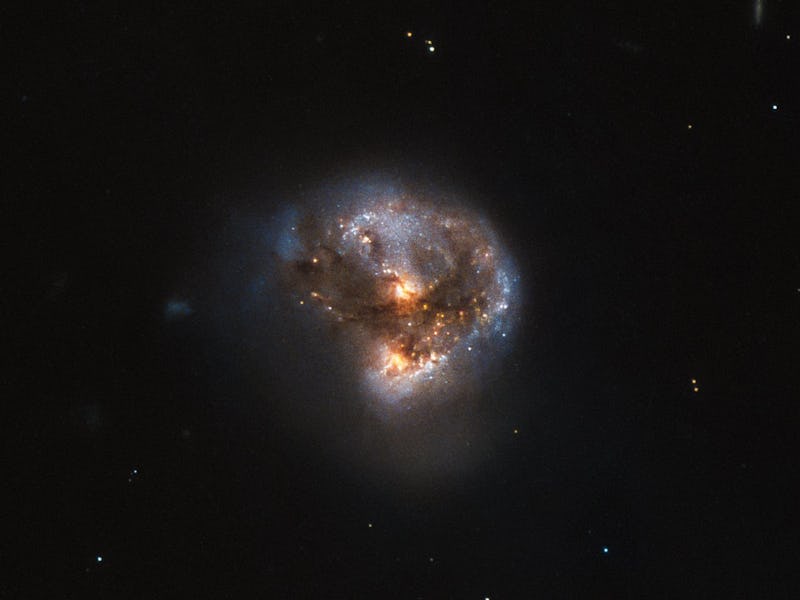Hubble Spies a Galactic Laser Beam Blasting Microwaves Into Space

Thank the cosmos we had Hubble around to help make a stressful 2016 a little easier. Even now, the space telescope has some spectacular new space porn to feast your eyes upon. In the observatory’s final image release of the year, Hubble has spied a rare cosmic gem: the megamaser.
Dubbed IRAS 16399-0937 and located approximately 370 million light-years away from Earth, this is not your ordinary, run-of-the-mill galaxy. A megamaser is a galaxy spewing intense microwave emission spectra rather than visible light out into space; essentially making it a galactic laser beam.
The image, taken with Hubble’s Advanced Camera for Surveys (ACS) and the NearInfrared Camera and Multi-Object Spectrometer (NICMOS), is the most detailed view we have of this galaxy. But the unusual galaxy is harboring a secret — it has not one, but two distinct galactic cores.
This cosmic painting seems to depict a celestial rosebud in bloom, but don’t let its serene nature fool you into ignoring the fact that it’s a violent collision of two galaxies.
A megamaser is essentially a galactic laser beam.
The galaxy is comprised of two distinct two parts — a northern core (dubbed IRAS-16399N), and a southern core (dubbed IRAS-16399S) — which couldn’t be more different. The southern core is essentially a humongous star factory, churning out embryonic stars at a staggering rate, while the northern core harbors a supermassive black hole, nearly 100 times more massive than the sun.
The dual cores are roughly 11,000 light-years apart and are interacting with the surrounding gas and dust as they combine, producing a stunning image in the process.